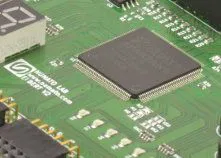Table of Contents:
3D printing is a technology that gives powerful possibilities to produce objects of almost any geometry from many different materials.
Undoubtedly, the most important elements that we need to start 3D printing are a computer with software for creating 3D objects, a 3D printer and filament. In practice, it turns out that this is not all! This article is a guide that will help you complete all the additional tools and accessories that will certainly be useful for you when performing various tasks with 3D printing.

3D printing filaments
Even the best engine won’t run without fuel or power. We can say the same about every 3D printer, but in this case the “fuel” is filament – the substance from which objects are produced on a 3D printer. They’re complimentary and obligatory when it comes to printing. The most popular types of filaments are:
- PLA (polylactic acid),
- ABS (Acrylonitrile Butadiene Styrene)
- HIPS (High Impact Polystyrene),
- PETG (Polyethylene Terephthalate with Glycol modification).
PLA is easy to heat-treat and completely biodegradable, and does not require a heated table, which is why it is often chosen by owners of cheaper 3D printers. On the other hand, ABS filament, although it requires a higher processing temperature, shows higher mechanical durability and is easy to detail finishing.

3D printing fume absorbers
When printing objects on 3D printers, it is necessary to heat the filament in the extruder nozzle, and for filaments with a higher temperature – additionally a 3D printer bed. A side effect is the formation of fumes – similar to solder tin, where the flux evaporates as a result of heating solder tin. Depending on the chemical composition of the filament, its vapors may have a different odor, usually unpleasant. On the other hand, ABS filaments, the vapors of which are harmful, are a bigger problem, and their long-term inhalation increases the likelihood of developing cancer. For this reason, before you start 3D printing, take care of your health. The room where you print must be well ventilated, but it is also a good idea to place a smoke absorber near the 3D printer – a very similar device to a soldering fume absorber. You can discharge the fumes through a pipe outside the building, or by installing a replaceable HEPA filter cartridge.


Adhesive pads and glue for 3D printing
Another very helpful addition in the 3D printing process are adhesive pads and glue-sprays, which support the adhesion of the printed object to the table. Adhesives also aid in removing objects after finishing the 3D printing process, greatly reducing the potential risk of object damage. Glue-sprays and adhesive pads work well with most popular filaments, such as PLA, ABS or HIPS.
Hand tools for 3D printing
When 3D printing, it may turn out that some printer components are damaged and need to be replaced quickly. For this, it is good to have an adjustable wrench, hex wrenches set and a screwdriver at hand. In addition to that, you will need side-cutters and a precision drill (such as Dremel 4000) with interchangeable tips for quick finishing of the printed objects right after cooling down. Also a knife and spatula are very useful, when the printed object is too firmly attached to the bed, even after cooling down.

How useful was this post?
Click on a star to rate it!
Average rating 0 / 5. Vote count: 0
No votes so far! Be the first to rate this post.



















